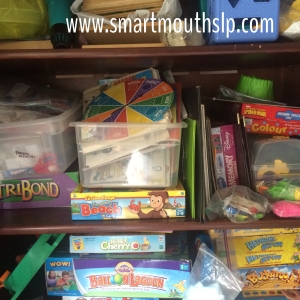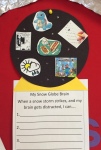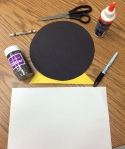What?! Did I just actually say don’t play games in speech? Not quite, but please let me explain. As I travel around speech rooms supervising new therapists and working with my own private speech kiddos, I have noticed a trend. In the quest to make therapy engaging and fun for our kids, we search high and low for the perfect game to gain “buy in” from our students. The holy grail appears to be ‘Cariboo’ based on facebook posts, but I am sure there are many other favorites across speech rooms. As a young therapist, I didn’t want to necessarily share my student’s new favorite game in speech with the parents. I feared they would run right out to buy it, thus removing the magic bullet that I had ‘discovered’.
I have since learned that there is no magic bullet or game that will work each time with every kid. In fact, you can have the most amazing lesson plan for therapy EVER in the history of speech and it won’t connect with the student that day, for whatever reason. Don’t take it personally. Being flexible is one of the secret weapons in our SLP arsenal and learning to adjust the session based on the student’s response, is an acquired skill. Don’t let yourself believe that finding a different “greatest game in the world” each and every week will guarantee success. It won’t, but it might burn you out and make you broke.
I DO want speech to be fun, and there is nothing more boring to me than sitting around a worksheet doing the same old same old. So where is the sweet spot for therapy balance? Combining a variety of goal focused activities, including games, that target core vocabulary (both academic and community based language), social language skills, and time to pause and learn in the moment is the recipe for a successful therapy session. Add a little movement, a sense of humor and the opportunity to connect the therapy room skills to the rest of their world, and you have a winning combination for your kids!
What are your thoughts on using games in therapy?



